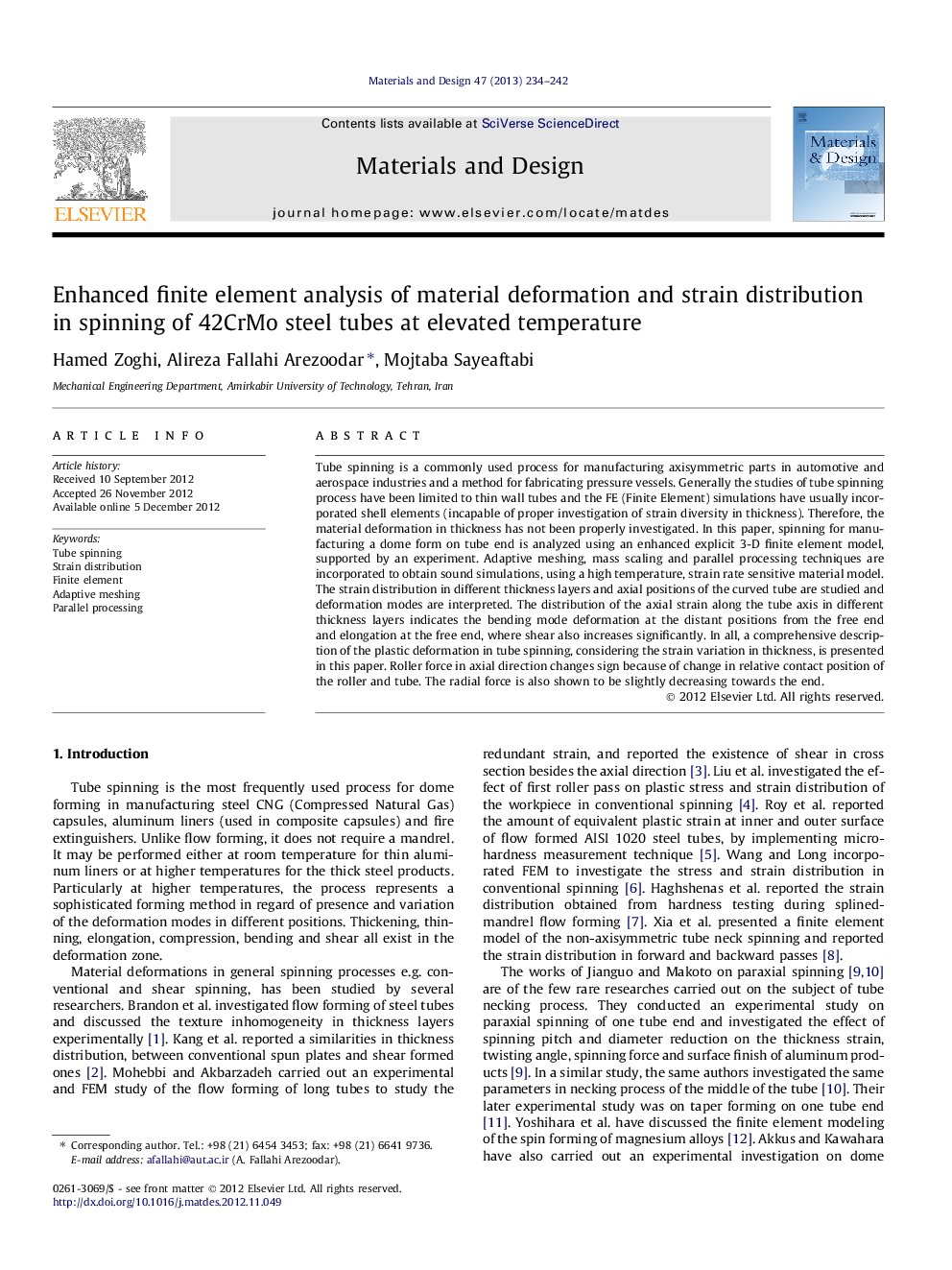| Article ID | Journal | Published Year | Pages | File Type |
|---|---|---|---|---|
| 830046 | Materials & Design (1980-2015) | 2013 | 9 Pages |
Tube spinning is a commonly used process for manufacturing axisymmetric parts in automotive and aerospace industries and a method for fabricating pressure vessels. Generally the studies of tube spinning process have been limited to thin wall tubes and the FE (Finite Element) simulations have usually incorporated shell elements (incapable of proper investigation of strain diversity in thickness). Therefore, the material deformation in thickness has not been properly investigated. In this paper, spinning for manufacturing a dome form on tube end is analyzed using an enhanced explicit 3-D finite element model, supported by an experiment. Adaptive meshing, mass scaling and parallel processing techniques are incorporated to obtain sound simulations, using a high temperature, strain rate sensitive material model. The strain distribution in different thickness layers and axial positions of the curved tube are studied and deformation modes are interpreted. The distribution of the axial strain along the tube axis in different thickness layers indicates the bending mode deformation at the distant positions from the free end and elongation at the free end, where shear also increases significantly. In all, a comprehensive description of the plastic deformation in tube spinning, considering the strain variation in thickness, is presented in this paper. Roller force in axial direction changes sign because of change in relative contact position of the roller and tube. The radial force is also shown to be slightly decreasing towards the end.
► Tube necking is modeled using explicit FE in Abaqus supported by experiment. ► Mass scale, parallel process, adaptive meshing are used creatively and optimally. ► Strain and strain rate distribution in thickness layers are analyzed and explained. ► Deformation modes throughout the tube are explained and discussed in forming zone. ► Forming force in three directions is illustrated and its variation is explained.
